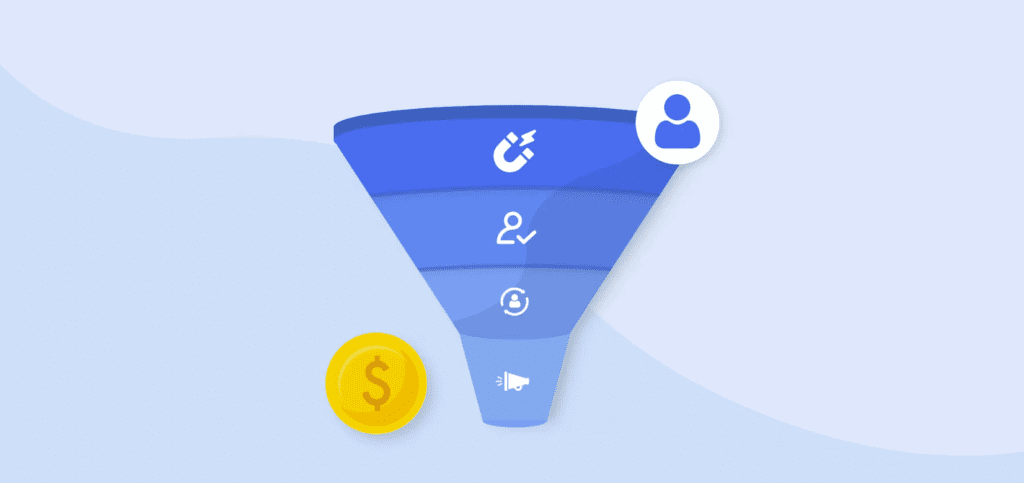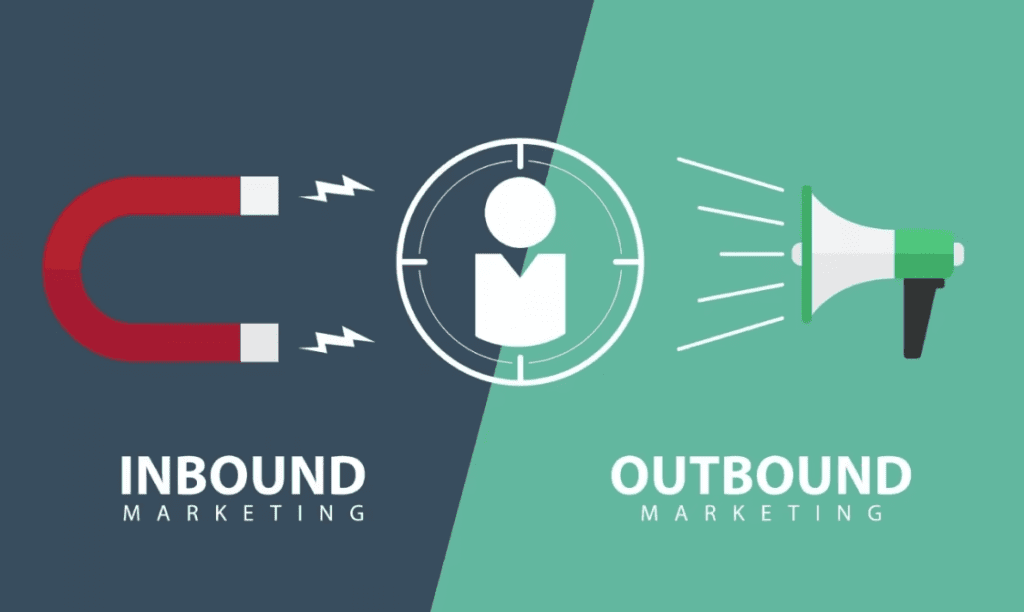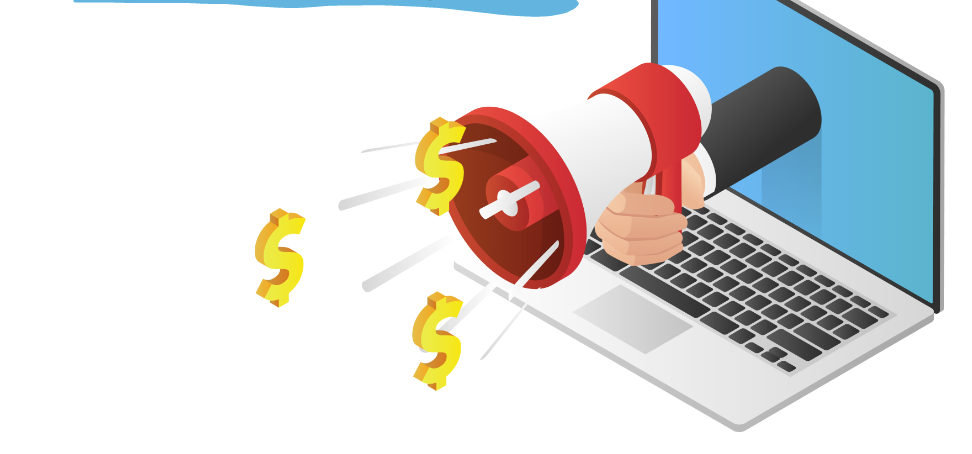Inbound marketing is all about creating amazing content to attract people’s interest in your product, such as informative blogs, explainer videos, and social media posts. This strategy focuses on subtle, organic ways to pull customers, but the results take a while.
In outbound marketing, you aggressively reach out to as many people as possible. Here, you aim to spend a lot of money making a loud bang, usually within a short time. Think of bold marketing campaigns like billboards, social media ads, and commercials.
If inbound marketing is a marathon, outbound marketing is a 100-metre sprint.
Being solar opposites, inbound and outbound marketing are often perceived as rivals, but in reality, they complement each other. The key to successfully merging both strategies is finding a sweet balance based on your budget and goals.
Keep reading to discover the difference between outbound and inbound marketing and their benefits and drawbacks. You’ll also learn different ways to combine the two strategies successfully.
What Is Inbound Marketing?

Inbound marketing involves creating tailored content and experiences to attract a target audience. With inbound marketing, you allow customers to come to you instead of going after them.
With this strategy, you spread awareness by generating blogs and social media posts about your product that people interested in your business will likely consume.
You can direct this traffic to your website through effective calls to action and persuade people to interact with your products. It’s all about finding creative ways to promote the brand organically.
While inbound marketing campaigns are much cheaper to execute, what you save in money gets spent on time. Don’t expect to see results overnight. It will take a long gestation period before your efforts start to bear fruit.
Examples of outbound marketing activities include:
- SEO blogs
- Social media posts
- Backlink building campaigns
- Explainer videos
- Infographics
Benefits of Inbound Marketing
Durable
Unlike outbound marketing, which expires after a while, inbound marketing content isn’t time-bound. Outbound marketing content mostly consists of limited ads that can only air for as long as the company budget allows. In contrast, blog content, social media posts, and email newsletters remain online (unless removed).
But there’s a caveat:
Achieving success with an inbound marketing strategy is a slow grind. It takes 3 to 6 months of consistently publishing valuable content to see significant results.
Collecting Valuable Leads
Of all the advantages of inbound marketing, the ability to collect relevant marketing leads should be right on top of that list. By sharing informative content laced with powerful call-to-actions, you can build your email list and direct traffic to your website.
Acquiring leads with inbound campaigns and exploring ways to act on them through outbound marketing activities is a good way to combine the two strategies.
Cost-effective
In the most affordable case scenario, an inbound marketing campaign isn’t more expensive than running a simple blog. Most of the budget goes to team building and site maintenance. However, depending on the size of the campaign, things can get costly.
To expedite results, marketers leverage automation platforms like HubSpot and ContentStack to monitor and analyze peoples’ interactions with the website and generate leads. In the end, the most expensive marketing campaign doesn’t come close to the annual spend of an outbound marketing campaign.
What is Outbound Marketing?
Outbound marketing is a strategy for reaching out to people to interest them in your product and encourage them to purchase it. Before Twitter names and TikTok, outbound marketing was the gold standard in the marketing space.
Any marketing activity that sends a message to a wide audience, from cold calling to pop-ups, billboards, and email blasts, is categorized as outbound.
Outbound marketing is like a fisherman casting his net far and wide, hoping for a good catch. It’s basically a numbers game. The volume of people you reach out to is directly proportional to the amount of leads you acquire.
The Evolution of Outbound Marketing
Back then, companies obtained leads through trade shows, advertising, and other marketing efforts. The leads were forwarded to email marketers and salespeople.
Generic emails went out to a large group of recipients, most of whom had no care in the world for the contents of the messages, and salespeople pitched the product to potential buyers one at a time over a call.
You get the gist: outbound marketing was tedious.
While it may seem like outbound marketing techniques have taken the backseat in our current time and age, most traditional marketing techniques have evolved into contemporary digital marketing practices.
Companies still relied on invasive ads to generate leads and drive customers down their sales funnel. However, since the average person uses smart devices seven hours per day, enterprises diverted a huge portion of their ad spend to feature their products on streaming services, social media platforms, and search engines.
Email marketing took a new life as well.
According to a study by the Content Marketing Institute, 81% of B2B marketers prefer using email newsletters when implementing content marketing strategies.
The idea of sparse email blasting has become a thing of the past. Marketing teams now invest more energy into better understanding customers by developing buyer personas. They use these customer profiles to create personalized emails to target leads.
Companies can draft more appealing emails by better understanding customers’ pain points and behavior. Studies show that using personas to create customer-centric emails can increase click-through rates by 14% and conversion rates by 10%. New technology like Mail AI also allows marketers to automate cold emails
Benefits of Outbound Marketing
Although outbound marketing is often criticized as old-fashioned, expensive, and exhausting, it does have its advantages.
Easy to Implement
Building a content marketing team is time-consuming and labor-intensive. Unfortunately, startups don’t have the luxury of stringing together a robust marketing team capable of creating a strong content presence.
On the other hand, outbound marketing campaigns don’t require as much human resources. Therefore, email marketing and social media ads present better alternatives for small businesses.
Boosts Brand Awareness.
Outbound marketing may be expensive, but it is the quickest way to introduce new products to potential customers. Nothing creates mass awareness for a product like a billboard or TV commercial.
Studies also demonstrate that brand awareness fosters loyalty and trust. Customers are more likely to choose a well-known brand over something they have never heard of.
Quick Results
When time is of the essence, you need a proactive marketing strategy. Real-time analytics tools like Plausible and Google Analytics allow businesses to track user interactions and generate warm leads. Outbound marketing allows you to act fast on clients interested in your products.
This strategy also tackles one of the biggest issues in Outbound marketing: the low ROI. Instead of wasting resources on a large group of people with little knowledge of their interests, you can narrow your reach to people more likely to buy your product.
Inbound vs Outbound Marketing
While there’s a raging debate about the best marketing strategy— inbound versus outbound marketing—a successful marketing campaign often involves a well-thought-out combination. One cannot thrive without the other.
Spreading public awareness about your product through ads without any online presence to back it up can create a negative brand image. At the same time, focusing solely on inbound marketing may slow down the growth of your business.
| Inbound Marketing | Outbound Marketing |
| Cost-effective | Expensive |
| Organic content, e.g., social media, blogs, explainer videos | Paid ads(e.g, billboards, social media ads), email marketing, and cold calls |
| Subtle approach | Direct and aggressive approach |
| Attract potential customers | Reach out to prospects |
| Takes time to yield results | Immediate impact |
How to Combine Inbound and Outbound Marketing?
A common approach is to start your campaign with inbound content marketing and then use outbound marketing to promote your content to a broader audience.
Another brilliant way to combine them is with remarketing. How? By serving ads hyperlinked to blogs, eBooks, or infographics to users who have previously shown interest in your product.
Let’s imagine a scenario where a user visits my e-commerce store and looks at some studio monitors but doesn’t make a purchase. In this case, the merchant could create an Instagram ad featuring a blog post about the studio monitors available on their website. Ideally, the blog should include a call-to-action (CTA) prompting the user to buy a studio monitor or take any other desired action.
Since this user was just looking up the same item, they must be researching the product or thinking about buying it. You can see how inbound marketing complements outbound marketing and improves its return on investment.
Outbound marketing also makes a similarly strong case for B2B sales, where direct contact with the prospective customer is essential. Sometimes, the buyer needs persuasion or an extra nudge in the right direction. A sales call can be the difference between a new client and a lost sale.
Conclusion
Inbound and Outbound marketing go together like bread and peanut butter. While outbound marketing starts a conversation with your customer, outbound marketing urges them to take quick action. By combining inbound and outbound marketing strategies, you can ensure that every stage of the buyer’s journey is a positive and enjoyable experience.









